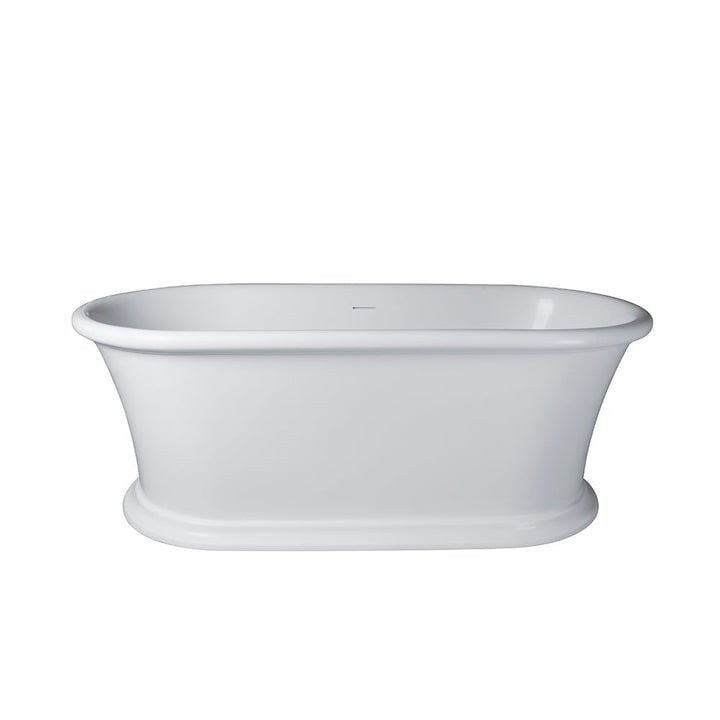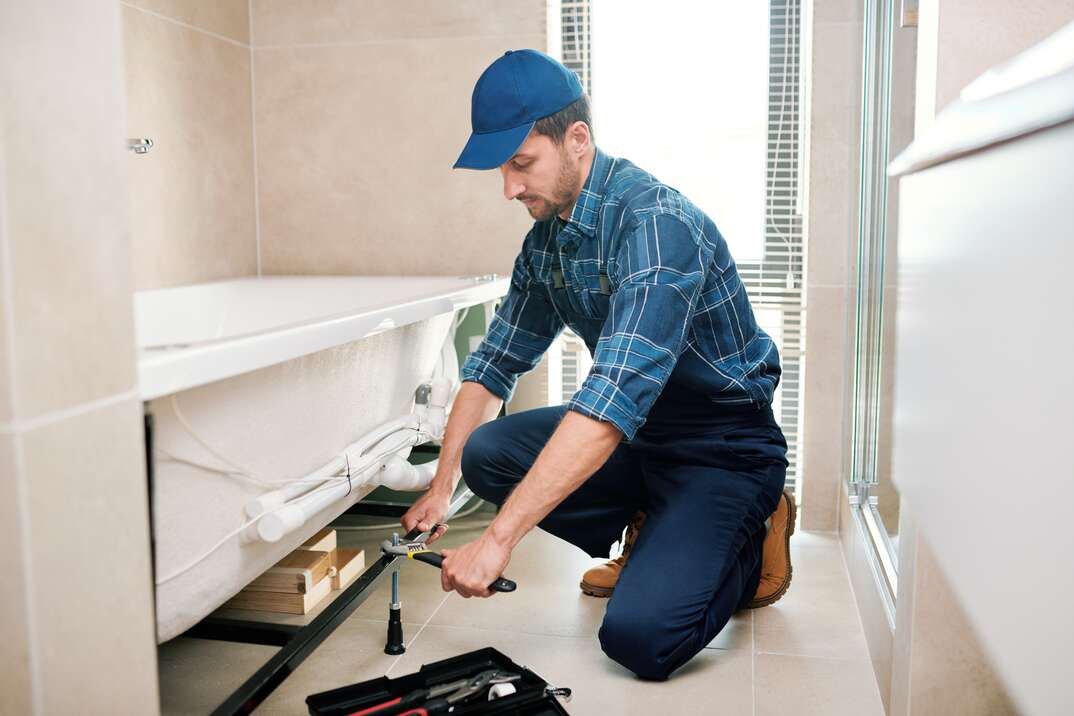Do It Yourself Bathtub Setup.
Do It Yourself Bathtub Setup.
Blog Article
Have you been looking for help around Installing A Bathtub?

Installing a bathtub isn't exactly brain surgery, yet it does call for strong plumbing, woodworking, and also often, tiling abilities. Replacing an old tub with a new one is also a moderately difficult task. If the old bathtub is conveniently easily accessible, the job can move rapidly; if you need to open up a wall surface to get rid of the old bathtub and also place the brand-new bath tub, the task is much harder. In either case, the project is within a residence handyman's abilities, although you will certainly require an assistant to leave the old tub as well as set in the new one. Ensure you have actually certified on your own for the work as well as fit attempting it. Rather than hiring a contractor to take control of a halfway-completed task, it is far better to think about utilizing one before you begin. Chances are you might require a professional plumber to make tube connections.
This article will certainly aid you mount a brand-new bath tub in your washroom if you have actually currently gotten a brand-new tub as well as don't need to change the arrangement of your previous water supply pipelines.
Your devices and also product list ought to make up the following:
Removing Old Touches
If you need to replace old faucets with brand-new ones as a part of your installation, after that the first thing you must do is disconnect the water supply. After doing so, activate the taps to drain any kind of water staying in the system. The process of getting rid of the existing taps can be fairly troublesome due to the limited access that is often the situation.
Use a container wrench (crowsfoot spanner) or a tap device to undo the nut that connects the supply pipelines to the taps. Have a towel ready for the continuing to be water that will come from the pipelines. Once the supply pipelines have been eliminated, use the very same tool to loosen up the nut that holds the taps onto the bath/basin. You will certainly need to quit the single faucets from turning throughout this process. When the taps have actually been removed, the holes in the bath/basin will need to be cleaned up of any kind of old sealing substance.
Before carrying on to fit the brand-new taps, contrast the pipe links on the old taps to the new faucets. If the old taps are longer than the brand-new taps, then a shank adapter is needed for the new faucets to fit.
Fitting New Taps
If the tails of the brand-new taps are plastic, after that you will certainly need a plastic adapter to stop damage to the string. One end of the adapter fits on the plastic tail of the tap as well as the other end offers a link to the existent supply pipes.
If you require to fit a monobloc, then you will call for reducing couplers, which connects the 10mm pipeline of the monobloc to the typical 15mm supply pipe.
Next off, place the tap in the installing opening in the bath/basin ensuring that the washers remain in area between the tap and the sink. Protect the faucet in position with the manufacturer offered backnut. As soon as the faucet is securely in place, the supply pipes can be linked to the tails of the faucets. The faucets can either be attached by using corrugated copper piping or with typical faucet adapters. The previous type ought to be linked to the faucet finishes initially, tightening only by hand. The supply pipes can later on be linked to the various other end. Tighten up both ends with a spanner after both ends have been connected.
Setting up the Tub
Making use of both wood boards under its feet, place the bathtub in the required setting. The wooden boards are practical in equally spreading out the weight of the bath tub over the area of the boards instead of concentrating all the weight onto 4 tiny factors.
The next goal is to ensure that the bathtub is leveled all round. This can be achieved by checking the spirit level and adjusting the feet on the bathtub until the spirit level checks out level.
To set up taps, fit the bottom of the furthest flexible tap connector to the suitable supply pipe by making a compression join; then do the same for the other faucet.
Activate the water and also examine all joints and also brand-new pipework for leakages as well as tighten them if required. Fill up the bathtub and also examine the overflow electrical outlet and also the typical electrical outlet for leaks.
Finally, deal with the bathroom paneling as explained in the producer's instruction manual. Tiling and securing around the bath tub must wait up until the tub has been made use of at the very least when as this will settle it right into its final position.
Planning for the Setup
Firstly, the sustaining framework provided with the bathroom should be fitted (if called for) according to the maker's instructions. Next off, fit the taps or mixer to the bath tub. When suitable the tap block, it is necessary to ensure that if the faucet includes a plastic washer, it is fitted in between the bath and also the taps. On a plastic bathroom, it is likewise sensible to fit a supporting plate under the faucets unit to stop strain on the bath tub.
Fit the versatile faucet ports to the bottom of both taps making use of 2 nuts as well as olives (occasionally supplied with the bathtub). Fit the plug-hole outlet by smearing mastic filler round the sink outlet opening, and after that pass the outlet via the hole in the bath. Make use of the nut supplied by the manufacturer to fit the plug-hole. Take a look at the plug-hole outlet for an inlet on the side for the overflow pipeline.
Next, fit completion of the versatile overflow pipeline to the overflow outlet. Afterwards, screw the pipe to the overflow face which need to be fitted inside the bath. Make sure you utilize all of the provided washers.
Link the catch to the bottom of the waste outlet on the bath tub by winding the thread of the waste electrical outlet with silicone mastic or PTFE tape, as well as screw on the catch to the outlet. Attach the bottom of the overflow tube in a comparable manner.The bathroom ought to currently be ready to be suited its final setting.
Tiling Around the Bathtub
In the area where the bath fulfills the tile, it is needed to seal the joins with a silicone rubber caulking. This is necessary as the fitting can relocate enough to break an inflexible seal, causing the water to permeate the wall surface between the bathroom and also the tiling, resulting in difficulties with dampness as well as feasible leaks to the ceiling below.
You can select from a selection of coloured sealants to assimilate your components and fittings. They are marketed in tubes and cartridges, and can securing gaps as much as a size of 3mm (1/8 inch). If you have a bigger gap to fill, you can load it with spins of drenched newspaper or soft rope. Keep in mind to constantly load the bathtub with water before sealing, to permit the activity experienced when the tub is in use. The sealer can fracture fairly early if you do not take into consideration this activity prior to securing.
Conversely, ceramic coving or quadrant floor tiles can be used to border the bathroom or shower tray. Plastic strips of coving, which are easy to use and cut to dimension, are additionally easily offered on the marketplace. It is suggested to fit the tiles utilizing water-resistant or water resistant sticky and also cement.
Bathtub Installation
How Important Is A Bathtub To Your Home?
High-quality baths, showers, and other bathroom updates are necessary when considering a smart investment in your home. It’s a room that you go to every day and one that is constantly being used by guests.The bathroom is one of the top trafficked rooms in a home and also one of the most valuable in terms of home resale.
Install Piping Before Tub
You will be using your existing drain and waste vent system, but pipes required include the hot and cold water supply lines and a pipe leading to a shower head. A mixing valve and shower head are also needed. Air chambers may be required.
Position the Tub
Lower the tub into place so that the continuous flange fits against the wall studs and rests on 1’x4' or 2’x4' supports. Anchor the tub to the enclosure with nails or screws inserted through the flanges into the studs.
NOTE: Remember, bathtubs and shower stalls may require support framing. A bathtub filled with water is extremely heavy, so check building codes and framing support before installing the tub.
Assemble Drain Connections
Assemble the bathtub drain connections by connecting the tub overflow with the tub drain above the trap, not beyond it. The trap will have a compression fitting that screws over the arm of the overflow assembly.
Place a Pipe For the Shower Head
First, locate a brass female threaded winged fitting and attach it to a framing support via a screw or a nail. Then run a pipe up the wall for the shower head. Sweat or solder the other side of the brass fitting to the top of the pipe.
Attaching Hot and Cold Water Lines
Attach your water lines for both hot and cold by sweating these directly into the hot and cold ports of the mixing valve. The mixing valve will be how water enters the tub’s system, not by the pipes themselves.
Install the Spout
Extend a piece of 1/2 inch pipe, or whichever length is specified in the manufacturer’s instructions, for the tub spout. Sweat on a male threaded fitting at the end of the pipe or use a brass nipple of the proper length and a 1/2 inch cap.
NOTE: At this point you should have your rough-in plumbing work inspected before proceeding further.
Check For Leaks
Restore the water pressure and check the drain connection and the supply pipes for any sign of leaking.
estore the Bathroom Wall
Replace the wall with moisture-resistant drywall as a base for your wall covering. Seal the joints between the wall and your new tub with silicone caulk as protection against water seepage.
https://www.berkeys.com/2016/12/02/bathtub-installation-dallas/

I discovered that article on How to Install a Bathtub Yourself when exploring the web. Enjoyed reading our write up? Please share it. Let another person locate it. Thanks a bunch for your time. Please check our blog back soon.
Request Free Estimate Report this page